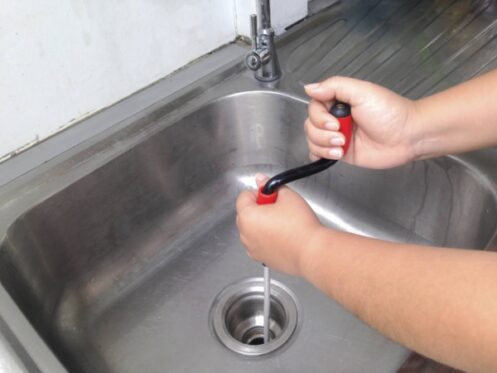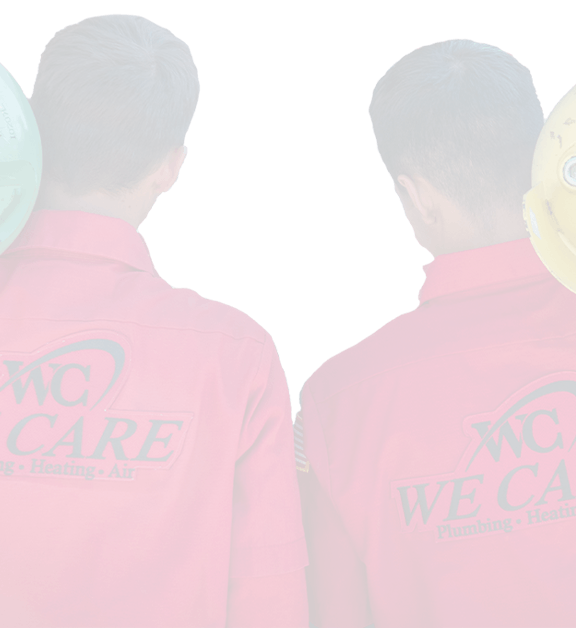Clogged drains and pipes are an extremely common plumbing issue that virtually everyone will have to deal with eventually. Finding that your sink or shower suddenly won’t drain is definitely annoying, but it can also be quite a serious issue because it can lead to a sewage backup. The good news is that you can sometimes clear a blocked drain on your own, and here is everything you need to know about how to do it and also how to know when it’s time to seek professional help.
Find the Source of the Blockage
The very first thing you should do if dealing with a blocked pipe or drain is to try to determine approximately where the blockage is. Pinpointing the location of the blockage is important because this will make it easier to know which steps you will need to take to clear the drain or pipe.
The easiest way to locate the blockages is to check all of the sinks and drains in your home to see which ones are affected. If only one drain, like your kitchen sink or shower, is blocked, this generally indicates that that drain itself or the pipe leading from it is blocked. If this is the case, then you can easily clear the clog on your own by using one of the methods discussed in the next sections.
If all of the drains in one room or part of the house are blocked, then the blockage is somewhere in one of the pipes that feeds into your plumbing stack. If all of your drains are slow or won’t drain at all, then the blockage is most likely somewhere in the main sewer line. In both of these situations, you will likely need to hire a plumber to clear the blockage for you.
Why You Should Avoid Using Drain Cleaner
Before we look at the different options for clearing a blocked drain, it is first important to understand why most professional plumbers recommend not using chemical drain cleaner. It is true that Drano and other chemical drain cleaners are quite effective at clearing even stubborn clogs. However, the issue is that these products contain extremely harsh chemicals that mix together to form a chemical reaction that produces a huge amount of heat.
Using drain cleaner once in a blue moon isn’t typically that big of a deal, but frequent use can easily weaken and corrode your pipes and potentially lead to major repairs. For this reason, it is best to only use drain cleaner as the very last result or preferably not at all.
Try to Clear the Blockage With Vinegar and Baking Soda
If only one sink or shower is blocked or draining slowly, you can often clear the obstruction by pouring a cup of baking soda down the drain followed by a cup or two of white vinegar. Let this mixture sit inside the drain for at least 15 minutes, and then try to flush the drain with hot water to see if this clears the clog.
This method will obviously only work if there is no standing water because it will prevent the mixture from going down the drain. If there is lots of standing water present, then you can skip this step and move on to the next one.
Use a Sink Plunger to Manually Clear the Blockage
For more major clogs or if there is standing water present, you can try to use a sink plunger to see if you can force the clog out of the drain or pipe. If you own a plumber’s snake, you could also run this down the pipe to pull the clog out. However, using a plumber’s snake without the proper training and understanding ccause serious damage or even break the pipe. It’s always best to leave this to the professionals!
Clearing a Clogged P-Trap
What usually happens when a kitchen or bathroom sink is blocked is that solids get trapped inside the P-trap underneath the sink. The P-trap is a U-shaped pipe that connects the drain itself to the drainpipe. The main purpose of this trap is to prevent noxious sewer gases from being able to rise up through the drain. The P-trap does this by trapping water in the bend of the pipe to create an airtight seal that traps gases inside the drainpipe.
The P-trap also helps to prevent too many solids from flowing out of the drain and into the drainpipe. Whenever food, hair, or other solids go down the drain, they could get stuck inside the P-trap bend instead of flowing out into the drain line. These solids can easily build up to the point where they begin to clog the P-trap.
The solution to this type of clog is usually to remove the P-trap and to clean it out manually. The trap can be removed by unscrewing the connections on each end to disconnect it from both the drain and drainpipe. Once the trap is loose, it is usually easy to rinse or to pull out the clog.
While this process is something you can do own, you may want to avoid since the inside of a P-trap is usually quite messy, and solids could have been sitting inside it for a long time. If you do try to do this step on your own, you will first want to make sure you put a bucket underneath as the trap and drain will be full of water. You will also definitely want to wear gloves since the trap will be full of bacteria. Finally, it is important that you reinstall the pipe properly and fully tighten the fittings; otherwise, your drain could then leak.
How to Know When It’s Time to Call a Plumber
If you’re dealing with a severe clog or a clog that is farther down inside the drain line, you typically won’t be able to clear it on your own. In this case, the only real option is to run a plumber’s snake down the length of the line to pull the clog out. Again, this is not something that we would recommend attempting on your own due to the risk of damaging your sewage system.
If you suspect that your main sewer line is partially or fully clogged, you should call a plumber or drain cleaning service as soon as possible. Clogs in your main sewer line are a much more serious issue that can lead to expensive repair bills if left unchecked. At the very least, a clogged sewer line will eventually cause sewage to start backing up inside your home, which is a health hazard and can lead to major water damage. There is also the chance that the clog could cause your sewer line to break, which is definitely not cheap to fix.
The best way to prevent any potential issues that can arise from a major clog is to always watch out for any signs that indicate you have a partial blockage somewhere in your drain or sewer system. The most obvious signs are if some or all of your drains are suddenly slower than normal or if you hear a bubbling or gurgling noise coming from your drains, toilet, or pipes. If you do notice any of these signs, you should try to immediately take steps to clear the blockage or to contact a plumber. If you don’t, your system may soon become completely clogged.
If you need drain cleaning or any other plumbing services in the Temecula, Murrieta, or Orange areas, the team at We Care Plumbing, Heating and Air is here to help. We offer a full range of plumbing, drain cleaning, and sewer line services, and we also install, repair, and service heating, cooling, and indoor air quality equipment. Contact us today if you have any questions or need to schedule a service call.






